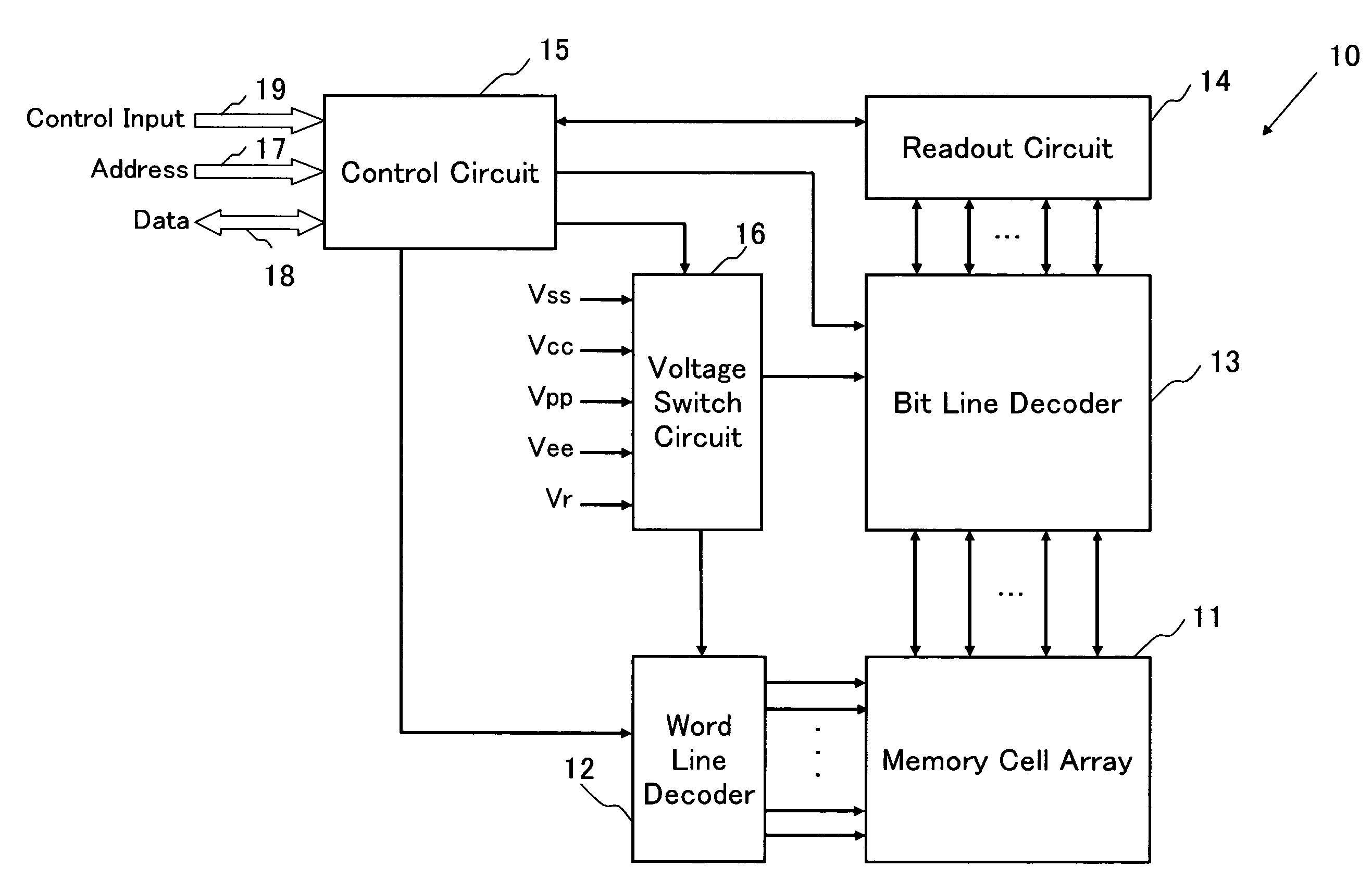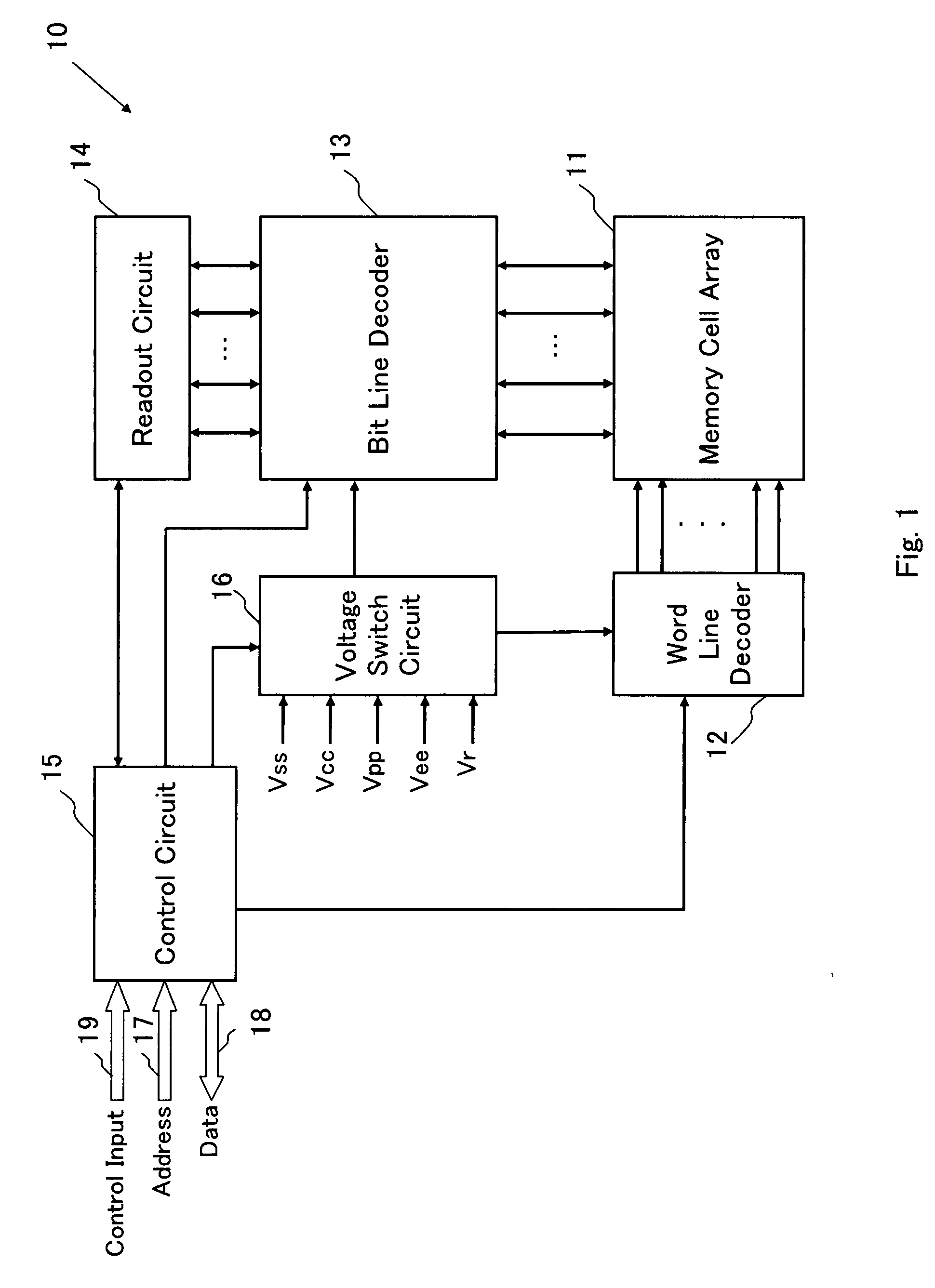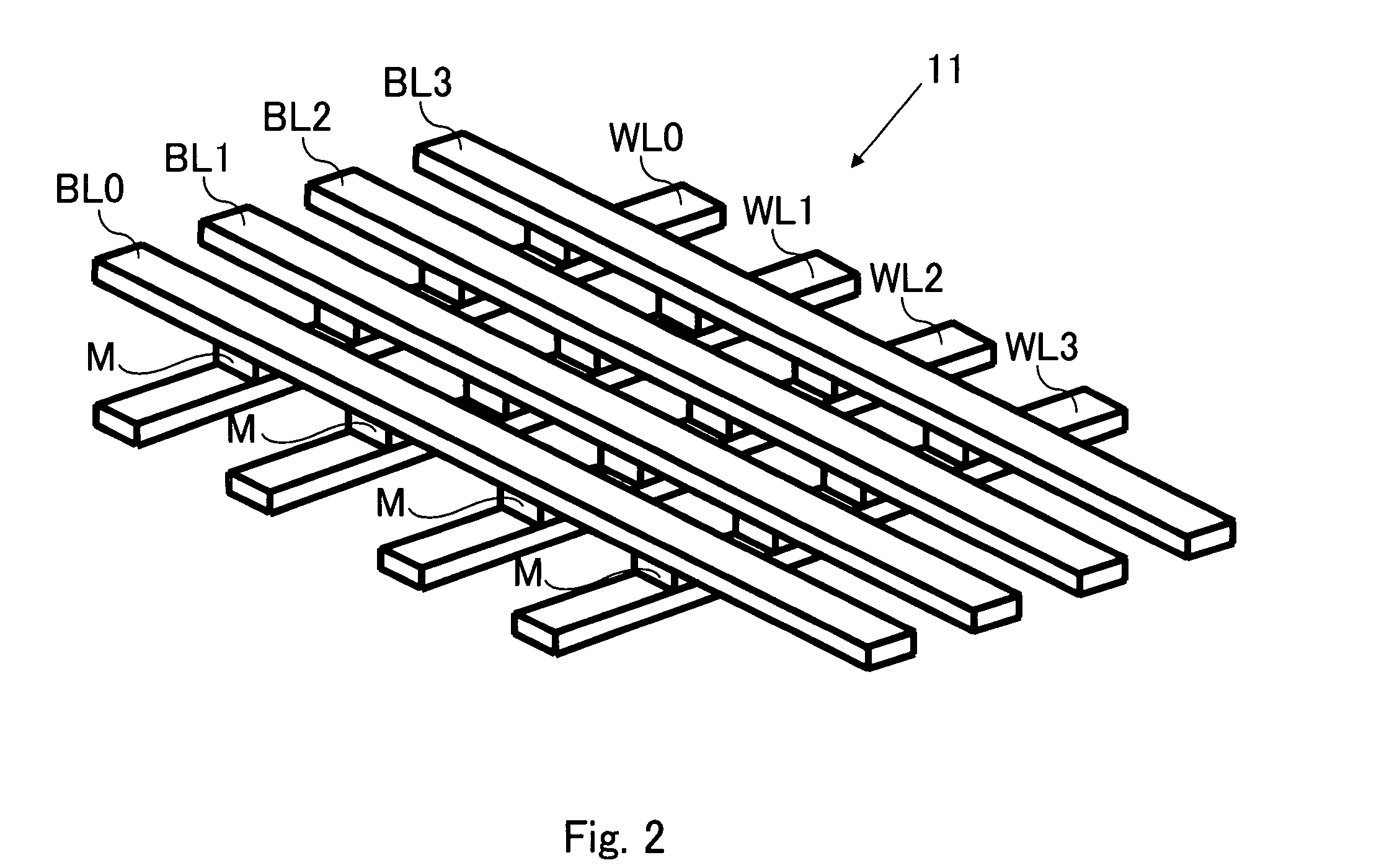Method of controlling the resistance in a variable resistive element and non-volatile semiconductor memory device
a technology of variable resistive elements and memory devices, which is applied in the direction of information storage, static storage, digital storage, etc., can solve the problems of power consumption of memory devices that is most likely to be increased, the logic circuit of conducting logic functions may be predominant in power consumption, and the primary function of such mobile devices including the life of batteries and the speed of access to data remain not high enough to be satisfied, so as to reduce the application time of program voltage pulses, increase the stability of monopolar switching action, and minimize the effect of program voltage puls
- Summary
- Abstract
- Description
- Claims
- Application Information
AI Technical Summary
Benefits of technology
Problems solved by technology
Method used
Image
Examples
Embodiment Construction
[0067]A non-volatile semiconductor memory device according to the present invention (thus referred to as an inventive device hereinafter) and a method of controlling the resistance in a variable resistive element in the inventive device (referred to as an inventive method hereinafter) will be described referring to the relevant drawings.
[0068]FIG. 1 illustrates a block diagram of one embodiment of the inventive device 10. As shown in FIG. 1, the inventive device 10 comprises an array of memory cells 11, a word line decoder 12, a bit line decoder 13, a readout circuit 14, a control circuit 15, and a voltage switch circuit 16.
[0069]The memory cell array 11 includes a number of non-volatile memory cells arranged in rows and columns, each memory cell determined by an address input from the outside is electrically programmed with a data. The data can be readout from the memory cell determined by the address input. More particularly, in response to an address signal received from an addre...
PUM
 Login to View More
Login to View More Abstract
Description
Claims
Application Information
 Login to View More
Login to View More - R&D
- Intellectual Property
- Life Sciences
- Materials
- Tech Scout
- Unparalleled Data Quality
- Higher Quality Content
- 60% Fewer Hallucinations
Browse by: Latest US Patents, China's latest patents, Technical Efficacy Thesaurus, Application Domain, Technology Topic, Popular Technical Reports.
© 2025 PatSnap. All rights reserved.Legal|Privacy policy|Modern Slavery Act Transparency Statement|Sitemap|About US| Contact US: help@patsnap.com



